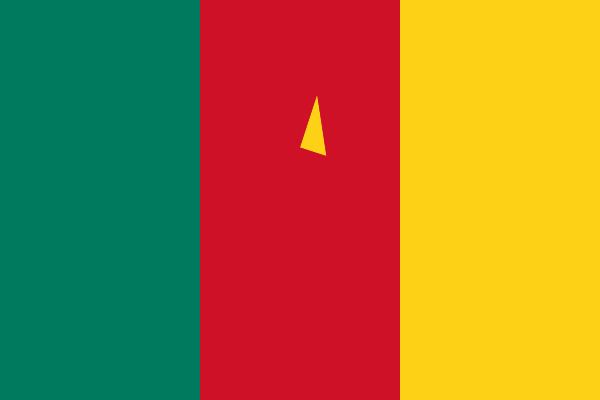Population 22.25 million (2013) GNI per capita 2,770 PPP dollars (2013) | Life expectancy 54.59 years (2012) Population growth rate 2.5% annual change (2013) | |
 | ||
Fertility rate 4.86 births per woman (2012) | ||
The demographic profile of Cameroon is complex for a country of its population. Cameroon comprises an estimated 250 distinct ethnic groups, which may be formed into five large regional-cultural divisions:
Contents
- Map of Cameroon
- Population
- Vital statistics
- Fertility and Births
- Ethnic groups
- Languages
- CIA World Factbook demographic statistics
- Median age
- Population growth rate
- Urbanization
- Sex ratio
- Life expectancy at birth
- Total Fertility Rate
- HIVAIDS
- Major infectious diseases
- Nationality
- Religions
- Literacy
- Education expenditure
- References
Map of Cameroon
The Cameroon government held two national censuses during the country's first 44 years as an independent country, in 1976 and again in 1987. Results from the second head count were never published. A third census, expected to take years to produce results, began on November 11, 2005, with a three-week interviewing phase. It is one of a series of projects and reforms required by the International Monetary Fund as prerequisites for foreign debt relief. The first results were published in 2010.
Population
According to the 2010 revision of the World Population Prospects the total population was 19 599 000 in 2010, compared to only 4 466 000 in 1950. The proportion of children below the age of 15 in 2010 was 40.6%, 55.9% was between 15 and 65 years of age, while 3.5% was 65 years or older.
Vital statistics
Registration of vital events is in Cameroon not complete. The Population Departement of the United Nations prepared the following estimates.
Fertility and Births
Total Fertility Rate (TFR) (Wanted Fertility Rate) and Crude Birth Rate (CBR):
Fertility data as of 2011 (DHS Program):
Ethnic groups
Languages
There are 24 major African language groups in Cameroon; additionally, English and French are official languages. Cameroonian Pidgin English is also widely spoken.
Peoples concentrated in the Southwest and Northwest Provinces — around Buea and Bamenda — use standard English and Cameroonian Pidgin English, as well as their local languages. In the three northern provinces — Adamawa, North, and Far North — either French or Fulfulde (the language of the Fulani) is widely spoken. Elsewhere, French is the principal second language, although pidgin and some local languages such as Ewondo, the dialect of a Beti clan from the Yaoundé area, have a wide currency.
Indigenous languages of Cameroon include:
CIA World Factbook demographic statistics
The following demographic statistics are from the CIA World Factbook, unless otherwise indicated.
Population
19,294,149(2010 est.)Note: estimates for this country explicitly take into account the effects of excess mortality due to AIDS; this can result in lower life expectancy, higher infant mortality and death rates, lower population and growth rates, and changes in the distribution of population by age and sex than would otherwise be expected (July 2009 est.)Median age
total: 19.3 yearsmale: 19.2 yearsfemale: 19.4 years (2010 est.)Population growth rate
3.129% (2013 est.)Urbanization
Urban population: 58% of total population (2010)Rate of urbanization: 3.3% annual rate of change (2010–15 est.)Sex ratio
At birth: 1.03 male(s)/femaleUnder 15 years: 1.02 male(s)/female15-64 years: 1.01 male(s)/female65 years and over: 0.85 male(s)/femaleTotal population: 1.01 male(s)/female (2009 est.)Life expectancy at birth
total population: 54.04 yearsmale: 53.21 yearsfemale: 54.9 years (2010 est.)Total Fertility Rate
According to Cameroon government website, average children per woman was 5.0 in 2004.
HIV/AIDS
Adult prevalence rate: 5.1% (2007 est.)People living with HIV/AIDS: 540,000 (2007 est.)Deaths: 39,000 (2007 est.)People living with HIV/AIDS: 370,000 (2010 est.)
